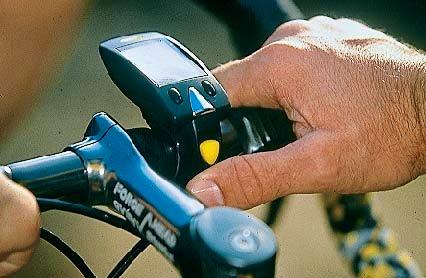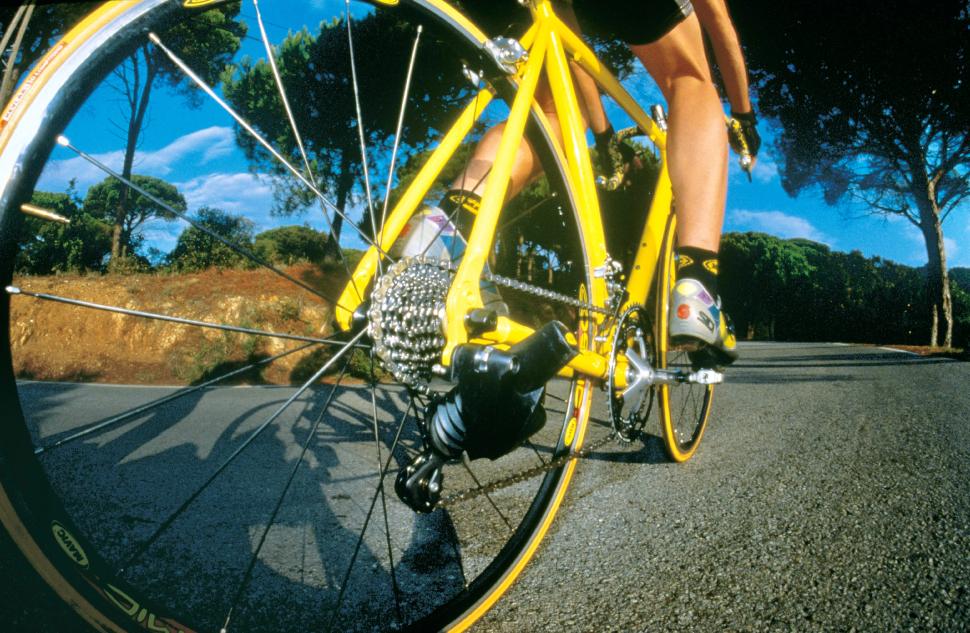- News
- Reviews
- Bikes
- Components
- Bar tape & grips
- Bottom brackets
- Brake & gear cables
- Brake & STI levers
- Brake pads & spares
- Brakes
- Cassettes & freewheels
- Chains
- Chainsets & chainrings
- Derailleurs - front
- Derailleurs - rear
- Forks
- Gear levers & shifters
- Groupsets
- Handlebars & extensions
- Headsets
- Hubs
- Inner tubes
- Pedals
- Quick releases & skewers
- Saddles
- Seatposts
- Stems
- Wheels
- Tyres
- Tubeless valves
- Accessories
- Accessories - misc
- Computer mounts
- Bags
- Bar ends
- Bike bags & cases
- Bottle cages
- Bottles
- Cameras
- Car racks
- Child seats
- Computers
- Glasses
- GPS units
- Helmets
- Lights - front
- Lights - rear
- Lights - sets
- Locks
- Mirrors
- Mudguards
- Racks
- Pumps & CO2 inflators
- Puncture kits
- Reflectives
- Smart watches
- Stands and racks
- Trailers
- Clothing
- Health, fitness and nutrition
- Tools and workshop
- Miscellaneous
- Buyers Guides
- Features
- Forum
- Recommends
- Podcast
feature
 Bike at Bedtime - Mavic Zap 01
Bike at Bedtime - Mavic Zap 01Check out Mavic Zap, the first electronic shifting from 30 years ago
Electronic shifting has been one of the biggest developments in the cycling world over recent years, so let’s take a look back at some of the earliest designs, not from Shimano, SRAM or Campagnolo, but from Mavic.
> Complete guide to electronic gears: your bike's shifting, indexing and charging explained
These days, electronic shifting – where you change gears using electronic switches instead of levers that control mechanical cables – is all over the place in the road biking world (and elsewhere too). For a start, it rules the pro peloton but beyond that, SRAM makes electronic shifting available from fourth-ranking Apex upwards. Campagnolo offers Super Record Wireless and now Super Record S Wireless components, FSA has its K-Force WE electronic drivetrain, and plenty of cheaper electronic shift systems are now coming along from Chinese brands like L-Twoo and Wheeltop.
> Check out our review of Wheeltop EDS-TX Wireless Carbon Electronic Shifters and Derailleurs
Shimano introduced Di2 (Digital Integrated Intelligence) trekking components as far back as 2001 but it added electronic shifting to its dedicated road lineup in the 2009 product year, and that’s when things really started moving forward. These days, it offers Di2 electronic components on the road down to third-tier 105. Is there more to come? Almost certainly.
Pics from Mavic
Back in the 1990s, the groupset landscape was very different from today. Unlikely as it might seem now, France’s Mavic, best known for its wheels, was an electronic shift pioneer. In 1992 it developed an electrically controlled derailleur that was tested by the Once and RMO teams in the Tour de France.
The following year Mavic launched its ZMS – Zap Mavic System – the first microprocessor-driven rear derailleur (the front derailleur still used a cable). Not surprisingly, it wasn’t electronic shifting as we know it today. You changed gear via two buttons positioned on the handlebar, a microprocessor in the bar sending the information to a solenoid (a type of electromagnet) in the rear derailleur.
When the solenoid activated, it released a ratcheting bar that controlled the movement of the derailleur. That bar only moved when you were pedalling, though.
One of the beauties of electronic shifting is that it’s relatively easy to install multiple switches that do the same job. For example, Shimano offers sprint shifters and climbing shifters, and SRAM offers Blips that you can position wherever you like to make changing gear simple when the normal shifters are out of reach. This can be a real boon in time trials where you can have shifters on both the base bar and the extensions.
Chris Boardman used Mavic’s electronic shifting to help secure the yellow jersey by winning the prologues (short time trials) of the Tour de France in both 1994 and 1997 while riding for GAN. Mavic eventually decided that Zap wasn’t up to the required standard and production was suspended, but it had entered the world of electronic components and continued with its derailleur R&D.
Mavic took another step in this direction in 1999 with the birth of the Mektronic electronic system. Here Mavic ditched the wires and went with digitally-coded radio waves to send the signals between components. Controls were built into hand grips and a multi-function onboard computer attached to the handlebar showed your speed, the distance you’d covered, your elapsed time, the sprocket the chain was on, and so on.
You couldn’t argue that Mektronic was the finished article as far as electronic shifting is concerned. It was only the rear derailleur that was electronic, for example, and many people found that it wasn’t exactly slick.
Control power came from a battery but power for shifting came from the chain. Although Mektronic had its fans, shifts could be slow and it was discontinued as a result of reliability issues. Mavic doesn’t make shifters or derailleurs these days.
Still, wireless electronic shifting back in the last century; it was an important milestone and it took years for rivals to take the idea further forward.
Mat has been in cycling media since 1996, on titles including BikeRadar, Total Bike, Total Mountain Bike, What Mountain Bike and Mountain Biking UK, and he has been editor of 220 Triathlon and Cycling Plus. Mat has been road.cc technical editor for over a decade, testing bikes, fettling the latest kit, and trying out the most up-to-the-minute clothing. He has won his category in Ironman UK 70.3 and finished on the podium in both marathons he has run. Mat is a Cambridge graduate who did a post-grad in magazine journalism, and he is a winner of the Cycling Media Award for Specialist Online Writer. Now over 50, he's riding road and gravel bikes most days for fun and fitness rather than training for competitions.
Latest Comments
- stonojnr 4 sec ago
fwiw in that area, yes absolutely its normal, its like a lowland heath sandy area, most of the b roads have alot of sand at times,, it just blows...
- ROOTminus1 1 hour 47 min ago
I'm glad the article went into more detail and cleared things up, the headline had me worried that some autonomous building had run rampant and...
- mark1a 2 hours 5 min ago
Still here, just showing a few signs of wear and tear. Hopefully still serviceable for some years to come.
- Secret_squirrel 2 hours 35 min ago
Has he fully recovered though, and will he ever?...
- Rendel Harris 2 hours 50 min ago
How can you know that you are "equally fearful" as "any female cyclist"? There is no possible way of quantifying such emotions and female cyclists...
- chrisonabike 3 hours 22 min ago
I think it would be fairer to blame the moon - as in "my client is a loony".
- Bungle_52 3 hours 45 min ago
Nice idea but Gloucestershire Constabulary are not interested as exemplified by this prvious NMOTD. Not only was there NFA for the close pass in...
- hawkinspeter 5 hours 17 min ago
I think black boxes are great for early detection of cognitive decline and/or sight problems. Someone's driving is going to become much less smooth...
- Bigtwin 5 hours 53 min ago
It's a fashion. https://guildford-dragon.com/shalford-driver-who-smashed-shalford-war-me...




Add new comment
2 comments
It would be nice if you show the Mavic electroniclevers too. They have little extensions inwards off the top of the hoods so that you could ride puppy paws but still hold the hoods. UCI legal?
https://weightweenies.starbike.com/forum/viewtopic.php?t=130022